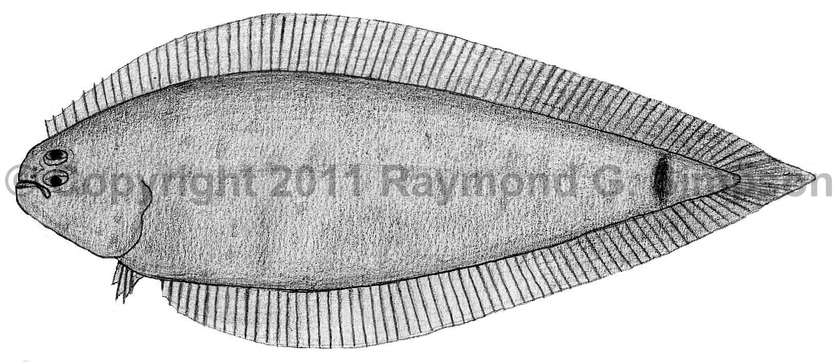
Common Name
Pygmy Tonguefish
Year Described
Ginsburg, 1951
Identification
Dorsal Fin Rays: 75-86
Anal Fin Rays: 60-70
Pectoral Fin Rays: none
Pelvic Fin Rays: 4
Caudal Fin Rays: 10
Longitudinal Scale Rows: 59-78
Vertebrae: 43-47
Pterygiophore pattern (1st three interneural spaces): 1-5-2 or 1-4-2
Other diagnostic characters include: well developed pupillary operculum, membrane ostia present on dorsal and anal fins, ocular side premaxilla with teeth along half to entire margin, ocular side dentary usually fully toothed, ocular side lower jaw without fleshy ridge, and scales absent from blind side of dorsal and anal fins.
Color
Light brown to yellowish with indistinct markings or crossbands. A dark blotch is present anterior to the caudal fin base. Peritoneum unpigmented. Dorsal and anal fins without obvious markings. Caudal fin darker, with a sprinkling of melanophores on the blind side of fin. Rest of blind side of body pale with no melanophores.
Size
Adults from 40-70mm. Maximum size to 88mm.
Habitat
Inner continental shelf from 20-146m (usually 30-100m), over muddy bottoms.
Range Map

Range
Continental waters from NC to Trinidad, including the Gulf of Mexico. Absent from the Caribbean islands.
References
Munroe, T.A. 1998. Systematics and ecology of western Atlantic tonguefishes (Symphurus: Cynoglossidae: Pleuronectiformes). Fish. Bull. 96(1):1-182.
Munroe, T. A. 2003. Bothidae (Pp. 1885-1895), Scophthalmidae (Pp. 1896-1897), Paralichthyidae (Pp. 1898-1921), Poecilopsettidae (Pp. 1922-1923), Achiridae (Pp. 1925-1933), Cynoglossidae (Pp. 1934-1959). In: Carpenter. 2003. The living marine resources of the Western Central Atlantic v. 3.